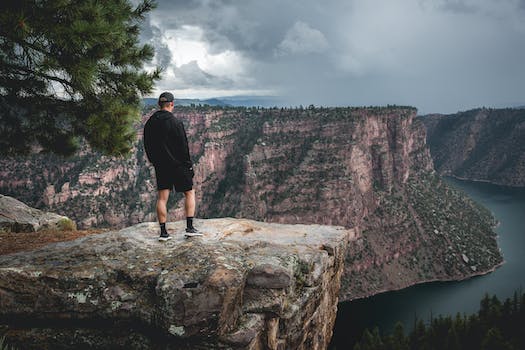-
Table of Contents
Start Your Adventure Now: Get Ready for Your Thru-Hike!
Are you ready to take on the challenge of a thru-hike? Whether you’re a seasoned hiker or a novice, planning your next thru-hike can be an exciting and rewarding experience. Thru-hiking is a great way to explore the outdoors, challenge yourself, and make memories that will last a lifetime. With the right preparation and planning, you can make sure your thru-hike is a success. In this guide, we’ll cover the basics of planning your next thru-hike, from choosing the right trail to packing the right gear. With the right preparation, you’ll be ready to hit the trail and make the most of your thru-hike.
What to Consider Before You Start Planning Your Thru-Hike
1. Physical Fitness: Before you start planning your thru-hike, it’s important to assess your physical fitness level. Make sure you are in good enough shape to handle the physical demands of a long-distance hike.
2. Gear: Make sure you have the right gear for your thru-hike. This includes the right clothing, footwear, and camping equipment. Research the climate and terrain of your hike and make sure you have the right gear for the conditions.
3. Finances: Thru-hiking can be expensive. Make sure you have enough money saved up to cover the cost of your hike. This includes the cost of gear, food, and transportation.
4. Time: Thru-hiking takes a lot of time. Make sure you have enough time to complete your hike. Consider taking a leave of absence from work or school if necessary.
5. Mental Preparation: Thru-hiking can be mentally challenging. Make sure you are mentally prepared for the challenge. Consider talking to a mental health professional if necessary.
6. Safety: Make sure you are aware of the safety risks associated with thru-hiking. Research the area you will be hiking in and make sure you are prepared for any potential hazards.
How to Choose the Right Trail for Your Thru-Hike
Are you ready to take on a thru-hike? Whether you’re a seasoned hiker or a novice, choosing the right trail is essential for a successful and enjoyable experience. Here are some tips to help you pick the perfect trail for your thru-hike.
1. Consider your experience level. If you’re a beginner, look for trails that are well-marked and easy to follow. If you’re an experienced hiker, you may want to challenge yourself with a more difficult trail.
2. Think about the terrain. Do you prefer flat, rolling hills, or steep, rocky climbs? Do you want to hike through forests, deserts, or mountains? Consider the type of terrain you’d like to experience and choose a trail that matches your preferences.
3. Research the trail’s amenities. Are there campsites along the way? Are there water sources? Are there places to resupply? Knowing what amenities are available can help you plan your trip and make sure you have everything you need.
4. Check the weather. Make sure you’re aware of the typical weather conditions for the time of year you plan to hike. If you’re not prepared for extreme temperatures or inclement weather, you may want to choose a different trail.
5. Talk to other hikers. Ask around to see what trails other hikers recommend. You can also read reviews online to get an idea of what to expect.
Choosing the right trail for your thru-hike is an important decision. With a little research and preparation, you can find the perfect trail for your adventure.
Tips for Estimating Your Thru-Hike Budget
1. Research the cost of gear: Before you set out on your thru-hike, you’ll need to invest in the right gear. Research the cost of the items you’ll need and factor that into your budget.
2. Estimate the cost of food: Food is one of the biggest expenses on a thru-hike. Estimate how much food you’ll need for the duration of your hike and factor that into your budget.
3. Consider transportation costs: You’ll need to factor in the cost of getting to and from the trailhead. This could include the cost of a plane ticket, bus ticket, or gas for your car.
4. Plan for unexpected expenses: Unexpected expenses can pop up on a thru-hike, so it’s important to plan for them. Consider setting aside a portion of your budget for unexpected expenses.
5. Track your spending: Once you’ve set your budget, it’s important to track your spending. This will help you stay on track and make sure you don’t overspend.
6. Consider the cost of resupply: You’ll need to factor in the cost of resupplying along the way. This could include the cost of food, fuel, and other supplies.
7. Set aside money for post-hike expenses: Don’t forget to set aside money for post-hike expenses. This could include the cost of a hotel, transportation home, or a celebratory meal.
How to Prepare for the Physical and Mental Challenges of a Thru-Hike
Thru-hiking is an incredible experience, but it can also be physically and mentally challenging. To ensure you’re prepared for the journey ahead, here are some tips to help you prepare for the physical and mental challenges of a thru-hike.
Physical Preparation
The physical demands of a thru-hike can be intense, so it’s important to prepare your body for the journey. Start by building up your strength and endurance with regular exercise. This could include running, hiking, swimming, or any other activity that gets your heart rate up. You should also focus on strengthening your core and leg muscles, as these will be essential for carrying your pack and navigating the terrain.
It’s also important to practice carrying a full pack. Start with a light load and gradually increase the weight as you get stronger. This will help you get used to the feeling of carrying a heavy pack and will help you build up your endurance.
Mental Preparation
Thru-hiking can be a mentally challenging experience, so it’s important to prepare your mind for the journey. Start by setting realistic goals and expectations for yourself. This will help you stay motivated and focused on the task at hand.
It’s also important to practice mindfulness and meditation. This will help you stay in the present moment and reduce stress and anxiety. Finally, make sure to take time to rest and relax. This will help you stay energized and focused on the trail.
By following these tips, you’ll be better prepared for the physical and mental challenges of a thru-hike. With the right preparation, you’ll be ready to take on the journey ahead.
Q&A
1. What should I consider when planning my thru-hike?
When planning your thru-hike, you should consider the length of the trail, the terrain, the climate, the elevation changes, the availability of water and food, the availability of resupply points, the cost of the hike, the availability of transportation to and from the trailhead, and the availability of medical care along the way.
2. How long should I plan for my thru-hike?
The length of your thru-hike will depend on the length of the trail, the terrain, and your own physical fitness and experience. Generally, it is recommended to plan for at least three months for a thru-hike.
3. What should I pack for my thru-hike?
When packing for your thru-hike, you should consider the climate, the terrain, and the length of the trail. You should also consider the weight of your pack and the items you will need for safety, comfort, and convenience. Generally, you should pack lightweight, durable items that are appropriate for the climate and terrain.
4. What should I do to prepare for my thru-hike?
To prepare for your thru-hike, you should research the trail and the terrain, practice hiking with a full pack, and build up your physical fitness. You should also practice Leave No Trace principles, plan your meals and resupply points, and make sure you have the necessary permits and gear.Getting started on a thru-hike can be a daunting task, but with the right planning and preparation, it can be an incredibly rewarding experience. Thru-hiking requires a great deal of research, planning, and preparation, but the rewards of completing a thru-hike are worth the effort. With the right planning and preparation, you can make sure that your thru-hike is a safe and enjoyable experience.
![]()









